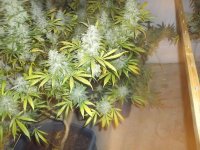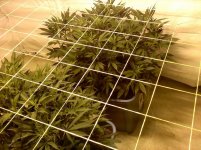Green Devil
Member
There is more than enough scientific data on for example the increase in flavonoids and terpenes in several crops under UV light. Increases up to 400% have been registered in scientific experiments in for example basil, though it is strain dependent how much it will influence them. Now we all know how terpenes influence the experience.
I believe it is also proven that the trichone is the only part of the plant that actually absorbs UVB. There are many plants that have trichomes, tomatoes being a good example. In a good tomato soup some cooks use the stalks for extra flavor. If you have ever been in a tomato greenhouse you will recognize the smell.
As for red and blue colors in your stems and sometimes even in the trichomes: read about anthocyanins
here is an interesting read.
Will read later tonight, thanks!
Can you back that statement up with scientific studies (regarding cannabis)!
Or maybe I misunderstood you now!
EDIT:
Yes I did, was reading too fast.
















